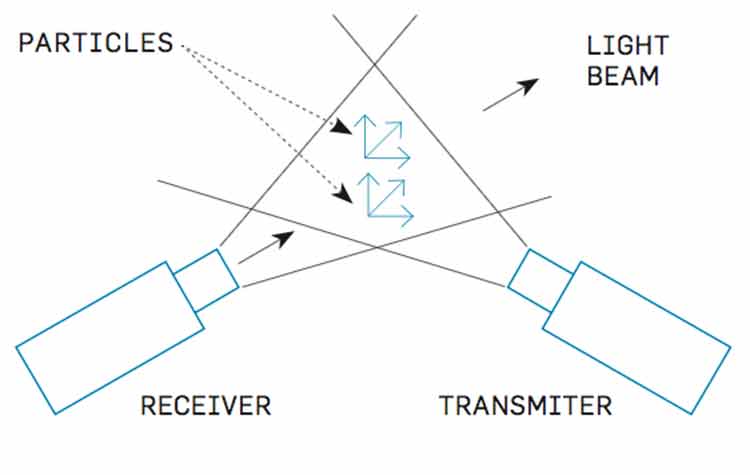
Most large airports use three of these self-contained RVR sensor systems placed next to the runway. Bryan Christie Design
Runway visual range, or RVR, precisely measures the distance that a pilot flying an ILS approach might expect to see when looking down the runway in those critical seconds just before touchdown. Because landing and some takeoff minimums are based on visibility, an operating RVR system is a vital operational element to support the high arrival and departure rates demanded at busy airports.
A typical RVR system is created around a visibility sensor, an ambient light sensor, a runway light intensity monitor, a data processing unit and a control display unit. RVR units are typically connected to an airport’s automated surface observing system to capture additional data points. The RVR readout display is normally found in both the control tower and the IFR radar room of an airport, where air traffic controllers can regularly update pilots inbound on an approach. For example, when clearing an aircraft for an ILS approach, the controller might add, “Runway 31 Right RVR is 2,400,” translating into a distance at touchdown of approximately half a statute mile.
The latest RVR visibility sensors (VS) use a forward scatterometer methodology that includes a projector and a photo receiver attached to a pole, placing the electronics approximately 10 feet higher than the runway surface. These VS units are typically installed adjacent to and in up to three positions along the runway’s length to create a touchdown, midpoint and rollout RVR reading. The VS measures the density of particles in the air, such as water droplets, snow or even dust that passes between the two sensor elements, and creates data points that are translated into a usable RVR measurement. Although these visibility measurements are captured at only three points along the runway, the data they create have proved to accurately represent the visibility over the entire landing surface.
Another RVR element, the ambient light sensor (ALS), is used to interpret the impact that background lighting, such as nearby runway lights, might have on the overall visibility measurement. Normally two ALSs are installed in central locations relative to the airfield environment. Next, the runway light intensity monitor, or RLIM, establishes the proper intensity of a high-intensity runway lighting system in varying visibilities, based on data from the ALS.
Eventually, data from all the sensor elements finds its way to the data processing unit, the main RVR computer, where the final calculations are performed to create the RVR readout placed in front of a tower or radar-room controller.

Subscribe to Our Newsletter
Get the latest FLYING stories delivered directly to your inbox






